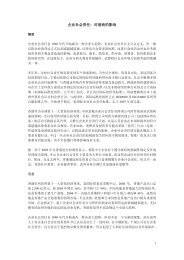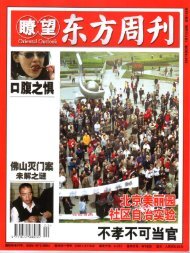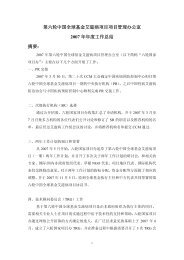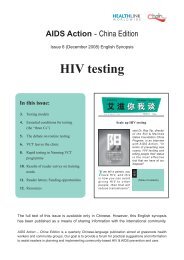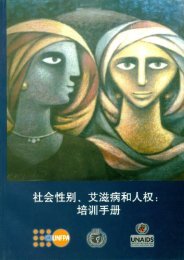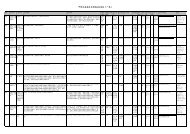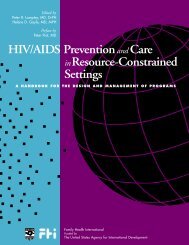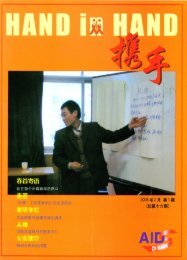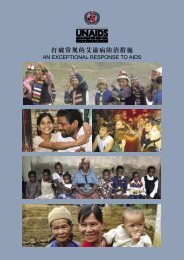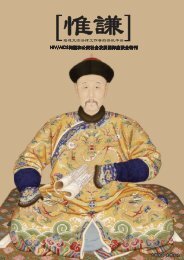The Training of Trainers Manual - UNFPA
The Training of Trainers Manual - UNFPA
The Training of Trainers Manual - UNFPA
You also want an ePaper? Increase the reach of your titles
YUMPU automatically turns print PDFs into web optimized ePapers that Google loves.
Things to consider when using energizers<br />
▼ Use energizers frequently during a training session, whenever people look sleepy or tired or to<br />
create a natural break between activities.<br />
▼ Try to choose games that are appropriate for the local context. Think carefully, for example,<br />
about games that involve touch, particularly <strong>of</strong> different body parts.<br />
▼ Try to select games in which everybody can participate and be sensitive to the needs and<br />
circumstances <strong>of</strong> the group. For example, some games may exclude people with disabilities.<br />
▼ Try to ensure the safety <strong>of</strong> the group, particularly with games that involve running. For example,<br />
make sure that there is enough space and that the floor is clear.<br />
▼ Try not to use only competitive games, but also include ones that encourage team building.<br />
▼ Try to avoid energizers that go on too long. Keep them short and move on to the next planned<br />
activity when everyone has had a chance to move about and wake up.<br />
Based on: 100 Ways to Energize Groups: Games to Use in <strong>Training</strong>s, Meetings and the Community. London: International<br />
HIV/AIDS Alliance, 2002.<br />
Exercise: Pass the beat<br />
Objectives<br />
To help participants get to know each other and become aware <strong>of</strong><br />
their dependence upon one another<br />
5-10<br />
minutes<br />
To raise the group’s energy<br />
Materials<br />
None<br />
Also suitable for<br />
training <strong>of</strong> peer<br />
educators and<br />
field work<br />
Process<br />
Have all participants form a circle. To introduce the exercise, say: ‘I am going to<br />
face and make eye contact with the person on my left, and we will try to clap our<br />
hands at the same moment [demonstrate]. <strong>The</strong>n, she or he will turn to the left and<br />
clap hands at the same time with the person next to her or him. We will “pass the<br />
beat” around the circle. Let’s try it now and remember to make eye contact and try<br />
to clap at the same time.’<br />
<strong>The</strong> rhythm builds up and the facilitator can call out ‘faster’ or ‘slower’ to increase<br />
the speed. Once the handclaps have passed around the circle, say: ‘Now we will<br />
try to make the rhythm go faster and faster. Always be ready, because we might<br />
send additional rounds <strong>of</strong> handclaps around the circle, chasing the first.<br />
32 <strong>Training</strong> <strong>of</strong> <strong>Trainers</strong> <strong>Manual</strong>




